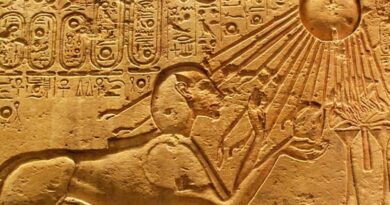How Criminal Events Occur in a Given Environment
The article by Cohen and Felson focuses more on how crimes and criminal activities occur in a given environment starting from the potential cause of the crimes to the various mechanisms or ways through which the crimes can be stopped. It analyses the various causes of increase in crime in a given set up over a given period of time. It is in fact a succinct insight into the various provisions of nature or fate which result in the occurrence of certain actions that result in having either victims or victimizers. The theory referred to by the authors is the routine activities theory. They go a step further to try and connect the way a change in routine in people’s lifestyles, over a given period of time, can result in a subsequent change in the number of criminal cases reported over the same period. The period talked of in the article is the one ranging from late fifties to early seventies and one which stretched for about one decade. In this period, according to records, there was a massive increase in the number of crimes and criminal activities reported to the authorities in the United States of America (Cohen & Felson, 1979).
The two authors connect this increase to the change in lifestyle among the majority of the people. This change was however not for the worst to drive people into becoming criminals but it was instead the change for the good that increases the occurrence of the crime and the increase in the vulnerability of the victims. It is stated that most of the people over the decade starting from 1960s had increased literacy by the year 1970. This therefore increased the employment rate which had been expected to have a decreasing impact on the many cases of criminal activities reported in the country. This was however not the case, instead the literate and employed people developed a routine of leaving their homes for work and thus houses remained unoccupied and unattended. There was also increased travelling out of the town. These two factors therefore motivated the burglars who carried out their criminal activities even during the day (Cohen & Felson, 1979).
According to the two authors the optimum conditions for a criminal activity to occur are the presence of motivated offenders who would play the role of victimizing others, the presence of suitable targets that would face victimization, and finally the absence of capable guardians to prevent the victimization from taking place. According to Cohen and Felson it is clear that crime is, to some extent, caused by poverty among other factors. This is clear from the information stated that most of the criminal activities occur in areas whose general standards of living are low. It should however be noted that the main factor that determine whether or not a criminal activity will take place in a given area is the convergence of the three factors in space and time. In other words a factor such as poverty is simply a contributor to the convergence if the above three factors (Cohen & Felson, 1979).
Sacco and Kennedy (2007) argue that crimes or criminal activities for that matter do not occur by chance but are instead part of a very large systematic occurrence of events, they argue that the in fact they consider that criminal activities occur in predictable manner and are not therefore as a result of accidents or coincidences in fact it is argued that the crimes are carried out by certain people in a particular pattern. This is in contradiction to what Cohen and Felson suggested that there is a certain convergence of the three factors in manner that can easily be termed as coincidental. It can also be viewed that Kennedy and Sacco in their book are actually arguing in favor of the sentiment by Cohen and Felson in the sense that a routine is simply the occurrence of certain activities in a given repetitive pattern. This pattern is what gives the offender a chance to organize their moves and victimize certain people in a similar manner for a given period of time (Sacco & Kennedy, 2007).
The three social domains that contribute to the criminal activities as discussed by the authors are the workplace domain, leisure domain, and the household domain. In all these domains crime generally follows a three step process from the beginning to the end. These stages include: precursors to the crime; the transition of the crime, and the aftermath of the crime. The authors argue that the participants in the episodes play different roles socially during the various stages of the criminal activity. Interaction of people at a crime event contributes to the precursor stage by either knowingly or unknowingly creating the environment that initiates the criminal activity (Sacco & Kennedy, 2007).
The unit appreciates the fact that both theories apply in the criminal activities’ context. Though handled differently, the perspectives can be applied independently to any crime. Both theories appreciate the involvement of at least three parties whose role, or failure to play a role results in the commitment of a criminal activity. There are two common parties that are identified I the two theories the propagator of the crime and the victim of the crime. The other parties simply play a role that might determine the end result of the criminal activity (Study Guide).
References
Cohen, L. E., & Felson, M. (1979). Social Change and Crime Rate Trends: A Routine Activity Approach. American Sociological Review, 44(4), 588–608.
Sacco, V. & Kennedy, L. (2007). The Criminal Event: An Introduction to Criminology in Canada. Nelson. Study Guide (n.d.) Unit 2.




